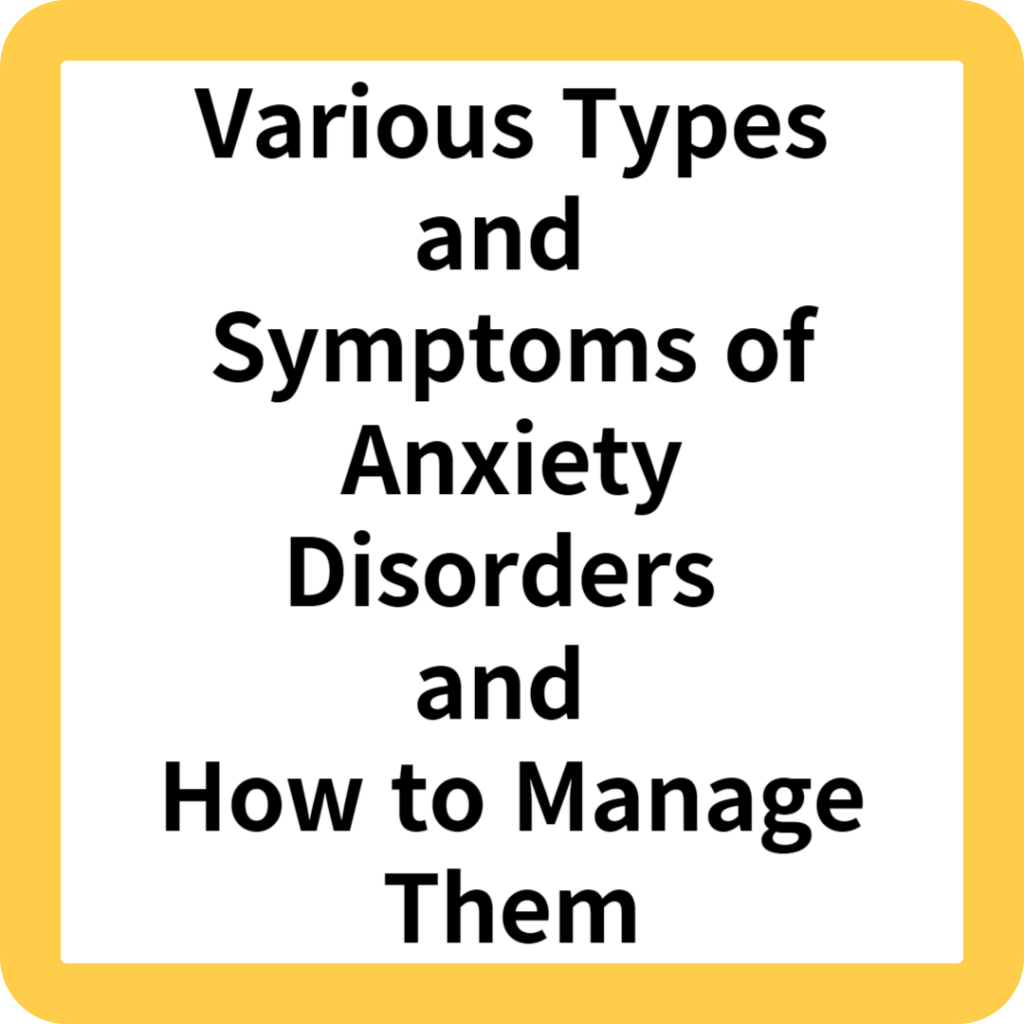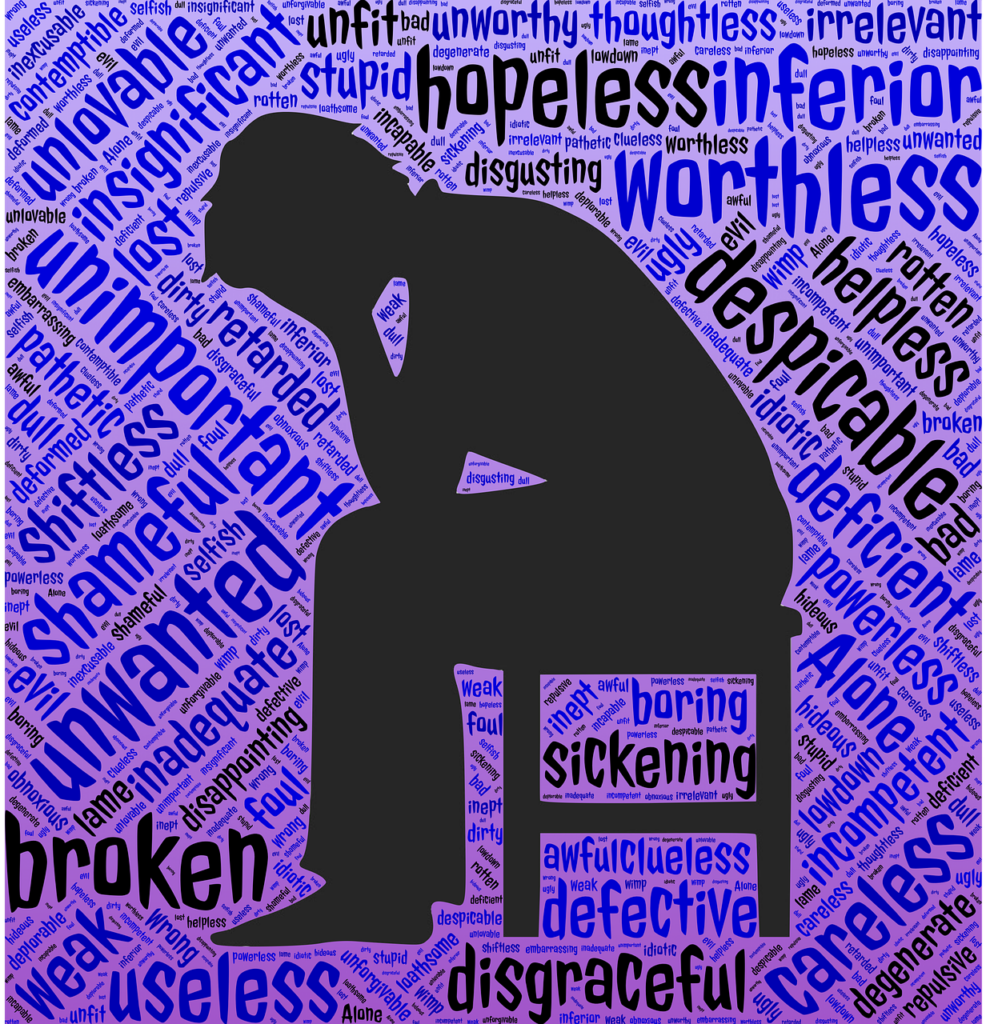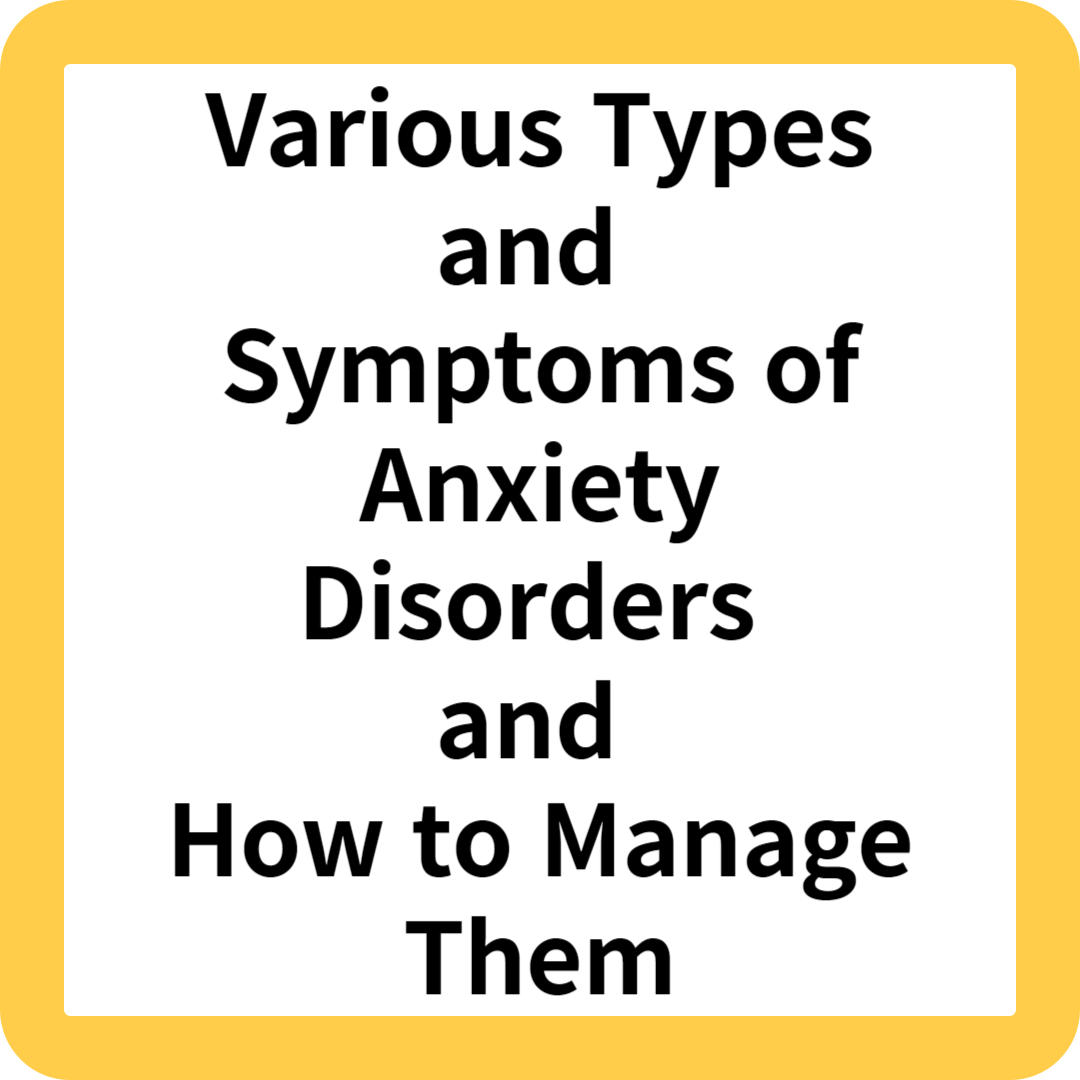Anxiety disorders is one of the psychological issues that many people face today. From everyday stress to workplace issues, interpersonal relationships, and even large-scale societal matters like COVID-19, the prevalence of anxiety disorders is on the rise. In fact, almost everyone has felt ‘anxious’ at some point. However, if this feeling persists and starts to interfere with your daily life, it’s advisable to seek professional help. In this post, we aim to provide in-depth information about the ‘Various Types and Symptoms of Anxiety Disorders, and How to Manage Them.’
First, we’ll delve into what an anxiety disorder actually is and identify its various forms and symptoms. Anxiety disorders come in many shapes and sizes, making it challenging to differentiate between what is and isn’t a genuine anxiety disorder. From Generalized Anxiety Disorder to Panic Disorder and Social Anxiety Disorder, the list is extensive. Understanding the symptoms and characteristics of each is the first step.
Next, we’ll share practical methods for managing these types of anxiety disorders. This will range from medical treatments to psychological approaches and stress management techniques you can apply in your daily life.
While this post is not a substitute for professional advice, it aims to provide basic information and management techniques for anxiety disorders, hoping to contribute to your mental well-being. Since these issues can be difficult to tackle alone, consulting a professional is highly recommended. We hope this post serves as a helpful first step in that journey.

1. Various Types of Anxiety Disorders
1-1. Generalized Anxiety Disorder (GAD)
Generalized Anxiety Disorder (GAD) manifests as frequent anxiety in everyday life. Symptoms generally last for more than 6 months and have a significant impact on daily activities. It mainly involves excessive worrying, anxiety, and stress.
1-2. Panic Disorder
Panic Disorder is characterized by sudden bursts of anxiety and fear. These symptoms, known as panic attacks, can escalate within minutes and disrupt daily life. The attacks are unpredictable and can occur anytime, anywhere.
1-3. Social Anxiety Disorder
Social Anxiety Disorder involves feeling anxious in social situations. Common triggers include interacting with people, making eye contact, and speaking in public.
1-4. Specific Phobias
Specific phobias involve excessive anxiety and fear related to specific objects or situations, such as heights, airplanes, or animals.
1-5. Obsessive-Compulsive Disorder (OCD)
Obsessive-Compulsive Disorder (OCD) entails experiencing anxiety due to repetitive thoughts or behaviors, like double-checking locks or excessively washing hands.

2. Recognizing Symptoms of Anxiety Disorders
2-1. Physical Symptoms
Anxiety Disorder can induce various physical symptoms like heart palpitations, sweating, and fatigue, which can significantly affect daily life.
2-2. Emotional Symptoms
Anxiety Disorder can also cause emotional issues like feeling anxious, helpless, and even despair.
2-3. Cognitive Symptoms
Cognitive problems can also arise due to Anxiety Disorder, such as excessive worrying, stress, and heightened tension.
2-4. Behavioral Symptoms
Behavioral symptoms of Anxiety Disorder include avoidance behaviors and tendencies to escape situations that trigger anxiety.
2-5. Social Symptoms
Social symptoms can appear in interpersonal relationships, like feeling anxious during social interactions or avoiding public speaking.
3. Managing Anxiety Disorders in Daily Life
3-1. Mental Preparation: Properly Coping with Anxiety Disorder
Understanding Anxiety Disorder is the first step in resolving it. Reading books or watching expert videos can be helpful.
3-2. Deep Breathing and Meditation: First Steps in Managing Anxiety Disorder
Deep breathing and meditation can greatly aid in managing Anxiety Disorder. Just a few minutes can help reduce anxiety and calm the mind.
3-3. Exercise and Activities: Physical Approaches to Anxiety Disorder
Consistent exercise in daily life is very effective for Anxiety Disorder, helping to relieve tension and reduce stress hormones.
3-4. Diet Adjustment: Foods that Help with Anxiety Disorder
Diet can influence Anxiety Disorder. Foods high in caffeine or sugar can worsen symptoms, while nutrients like omega-3 fatty acids can be helpful.
3-5. Social Support: Collective Help for Anxiety Disorder
One of the biggest challenges for people with Anxiety Disorder is loneliness, which can be mitigated through social support from family, friends, and experts.

4. Consulting with Experts
4-1. The Need for Treatment: Expert Consultation for Anxiety Disorder
If symptoms worsen, consulting with an expert is essential. Doctors or psychologists can provide accurate diagnoses and effective treatment plans for Anxiety Disorder.
4-2. Medication: Medical Management of Anxiety Disorder
In some cases, medication might be necessary. Although it can relieve short-term symptoms, it should be part of a long-term treatment plan.
4-3. Psychological Approaches: Mental Treatments for Anxiety Disorder
Psychological approaches like Cognitive Behavioral Therapy (CBT) can help address the root causes of Anxiety Disorder.
4-4. Group Therapy: Empathy and Anxiety Disorder
Group therapy involves sharing problems related to Anxiety Disorder and finding solutions collectively, helping to alleviate feelings of loneliness.
4-5. Online Resources: A Modern Approach to Managing Anxiety Disorder
Various online resources like apps, websites, and forums can provide valuable information and support for managing Anxiety Disorder.
Anxiety is something we all face in our daily lives to some extent. However, when it crosses a certain threshold, it can significantly disrupt your day-to-day activities, which is why proper management and coping strategies are essential. The various forms, symptoms, and treatments for anxiety disorders differ from person to person. The key is to find what works best for you.
One of the hardest things for people with anxiety disorder is finding someone who truly understands what they’re going through. That’s why social support and professional help are so crucial. Don’t hesitate to seek these out; they can be game-changers in managing your anxiety. Plus, with advancements in technology, there are now a plethora of online resources available to help you understand your anxiety disorder better and how to manage it effectively.
Remember, anxiety disorder isn’t just something you “get over.” It’s part of your life’s journey, a lens through which you can better understand and even grow yourself. Shifting your perspective from seeing it as a purely negative issue to something that can be turned into positive energy is possible. And don’t hesitate to seek professional help in doing so; experts are there for a reason.
If you’re grappling with an anxiety disorder, remember you’re not alone. Many others are going through similar struggles, and there’s a wealth of resources and support available. If you have any questions or need more information, feel free to ask. Take the weight off your shoulders and take steps toward a better tomorrow.



